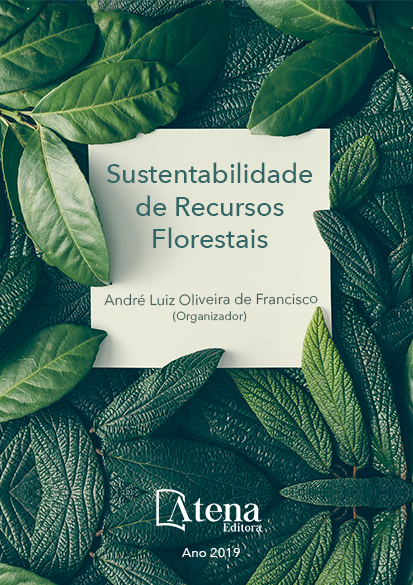
Mapeamento de focos de calor em área de invasão biológica no domínio Mata Atlântica em Minas Gerais
O desmatamento e transformação
de extensas áreas para uso agropecuário têm
contribuído na disseminação da samambaia
Pteridium esculentum subsp. arachnoideum
(Kaulf.) J.A. Thomson, que coloniza estes
espaços antrópicos devido características
peculiares da espécie, como a a resistência
de seus rizomas ao fogo. O objetivo deste
trabalho foi analisar a dinâmica da distribuição
espaço-temporal de focos de calor em uma
área com predominância de P. esculentum,
no município de Capelinha, Minas Gerais. O
processamento foi realizado com auxílio do
software QGIS 2.18.16, a partir da base de
dados vetorial do INPE, para o período de 2005
a 2017. Foi calculada a densidade por meio
do estimador de Kernel, utilizando-se cinco
níveis de classificação dos focos: (I) muito
baixa, (II) baixa, (III) média, (IV) alta e (V) muito
alta. Para o ano de 2005, observou-se focos
dispersos, com concentrações à Nordeste e
Sul do município. Em 2010, diagnosticou-se
maior espacialização dos focos. Em 2015, os
Sustentabilidade de Recursos Florestais Capítulo 7 82
raios de focos com densidades baixas e médias ocorreram ao longo da área central,
à Oeste e à Leste. O maior foco, classe muito alta, incidiu sobre a RPPN Fazenda
Fartura. No ano de 2017, o padrão seguiu o observado em 2015, entretanto, os raios
de abrangência foram menores, especialmente à Nordeste e Sul, em áreas limítrofes
municipais. Percebe-se a reincidência de focos de classes alta e muito alta sobre a
unidade de conservação, validando a eficiência da ferramenta na detecção das áreas
com ocorrências de incêndios.
Mapeamento de focos de calor em área de invasão biológica no domínio Mata Atlântica em Minas Gerais
-
DOI: 10.22533/at.ed.4451916017
-
Palavras-chave: Densidade de Kernel. Monitoramento ambiental. Restauração florestal. Sistemas de Informações Geográficas.
-
Keywords: Kernel Density. Environmental monitoring. Forest Restoration. Geographic Information Systems.
-
Abstract:
The deforestation and transformation of extensive areas for agricultural
use have contributed to the dissemination of the fern Pteridium esculentum subsp.
arachnoideum (Kaulf.) J.A. Thomson, who colonizes these spaces, due to peculiar
characteristics of the species, among them the resistance of their rhizomes to fire. The
objective of this work was to analyze the dynamics of the space-time distribution of heat
sources in an area with predominance of Pteridium esculentum subsp. arachnoideum
(Kaulf.) J.A. Thomson, in the municipality of Capelinha, MG. The processing was
performed by the software QGIS 2.18.16, from the vector database (shapefile) of
the INPE database, for the period 2005 to 2017. The density was calculated through
the kernel estimator, using five levels of outbreak classification: (I) very low, (II) low,
(III) medium, (IV) high and (V) very high. In 2005, there were scattered foci, with
concentrations in the Northeast and South of the municipality and in the South. In
2010, greater spatialisation of foci was diagnosed and in 2015, foci of low and medium
density foci occurred along the central area, west and east. The highest focus, very high
class, focused on the RPPN Fazenda Fartura. In the year 2017, the pattern followed
the observed in 2015, however, the radius of coverage was smaller, especially to the
Northeast and South, in municipal boundary areas. It can be noticed the recidivism of
high and very high class foci on the conservation unit, validating the efficiency of the
tool in the detection of areas with occurrences of fires.
-
Número de páginas: 15
- Eduarda Soares Menezes


